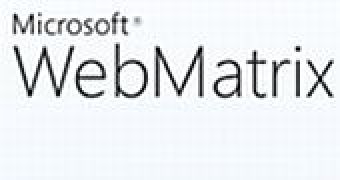Version 1 of WebMatrix is ready to go later today, January 13th, 2011, as I’ve told you since ahead of Christmas 2010. Microsoft set the launch of the first final release of WebMatrix for the second day of CodeMash. The event will be streamed live starting at 12:30 ET.
Web developers will be invited to “Enter the WebMatrix” at approximately six months after the Redmond company first introduced the project, which went through no less than three Beta milestones during the development process.
“WebMatrix makes it easy for anyone to create a new web site using a template or an existing free open source application, customize it, and then publish it on the internet via a wide choice of hosting service providers,” revealed a member of the Microsoft Web Platform team.
“WebMatrix lets you create web sites the way that you want to. We've spoken with countless web developers, and have learned what they want to create the next generation of web sites.”
As previously noted, WebMatrix is the result of Microsoft’s efforts to streamline web development efforts on top of the Windows platform.
Everyone from beginners to professional developers can leverage the suite of tools in order to create and deploy websites, whether they write the code themselves, or take advantage of a range of existing open source web applications which can be customized with templates.
Jim O’Neil, Microsoft Developer Evangelist highlighted some of the components of WebMatrix:
“•an IDE – supporting the new ASP.NET Web Pages framework with Razor syntax as well as PHP,
•IIS Express – a lightweight web server; that’s lightweight in terms of installation profile and no requirement for administrative access, but with a full web server feature set (URL rewrite, SSL, IIS 7 modules, etc.)
•SQL Server Compact Edition – a free, embedded, file-based database engine (that’s right, no server installation required!)
•Web Gallery integration – the Microsoft Web App Gallery hosts a slew of Open Source offerings: CMSes like WordPress and Drupal; blog platforms like Subtext and BlogEngine .NET; photo galleries like Mayando and Gallery, and more.”

 14 DAY TRIAL //
14 DAY TRIAL //